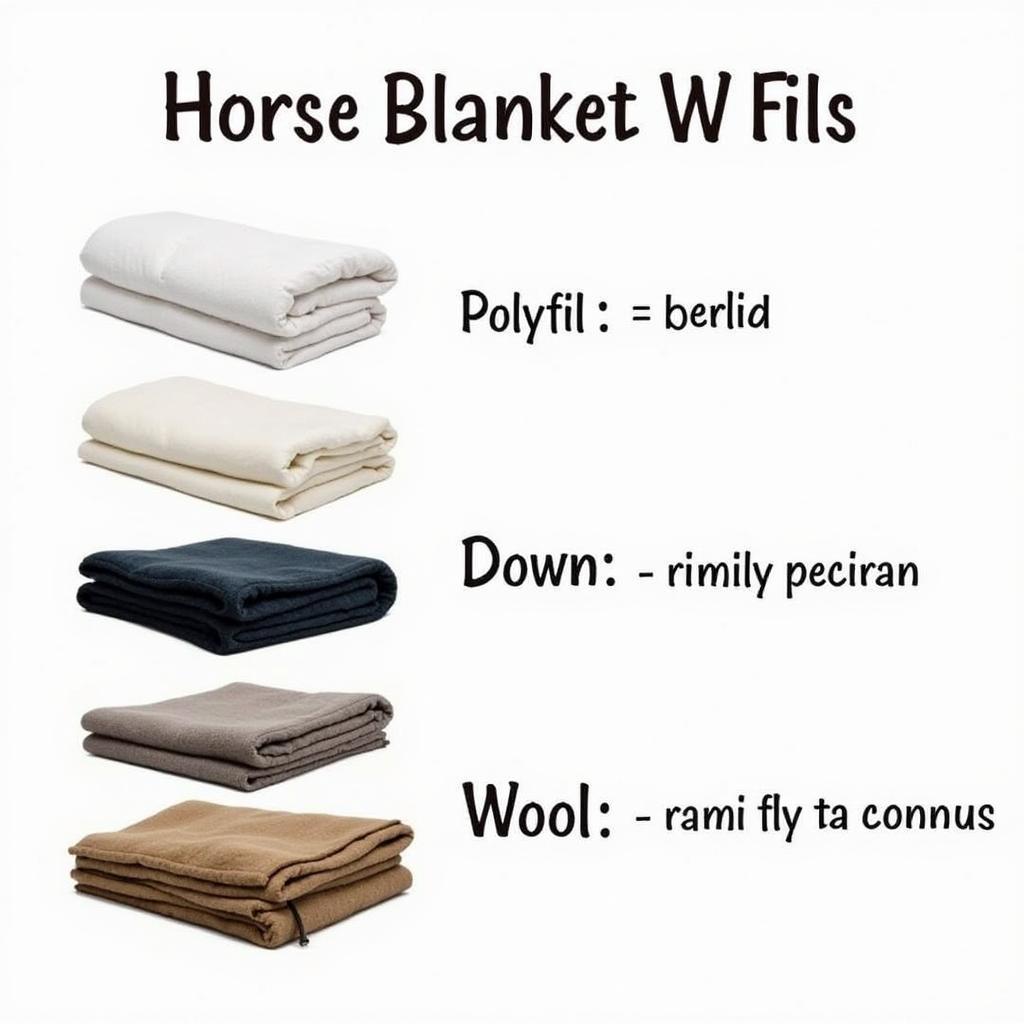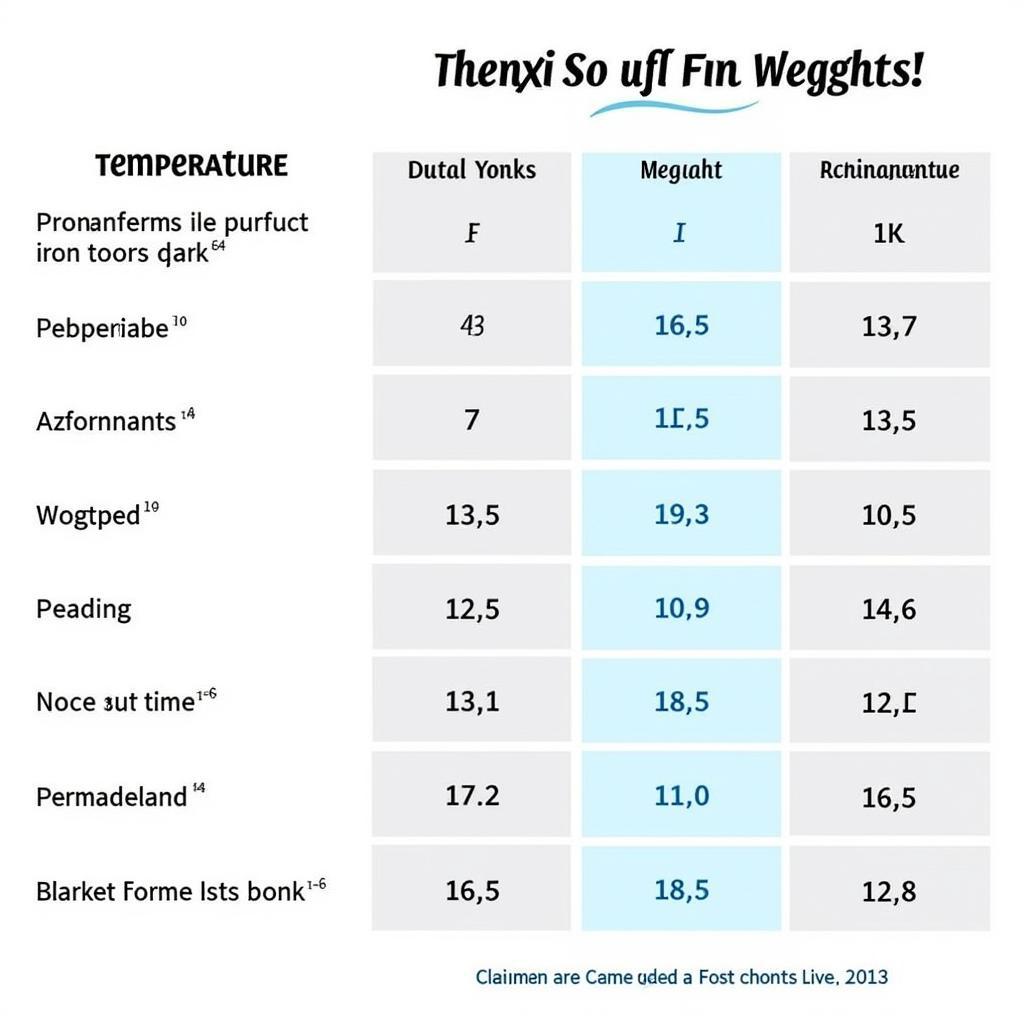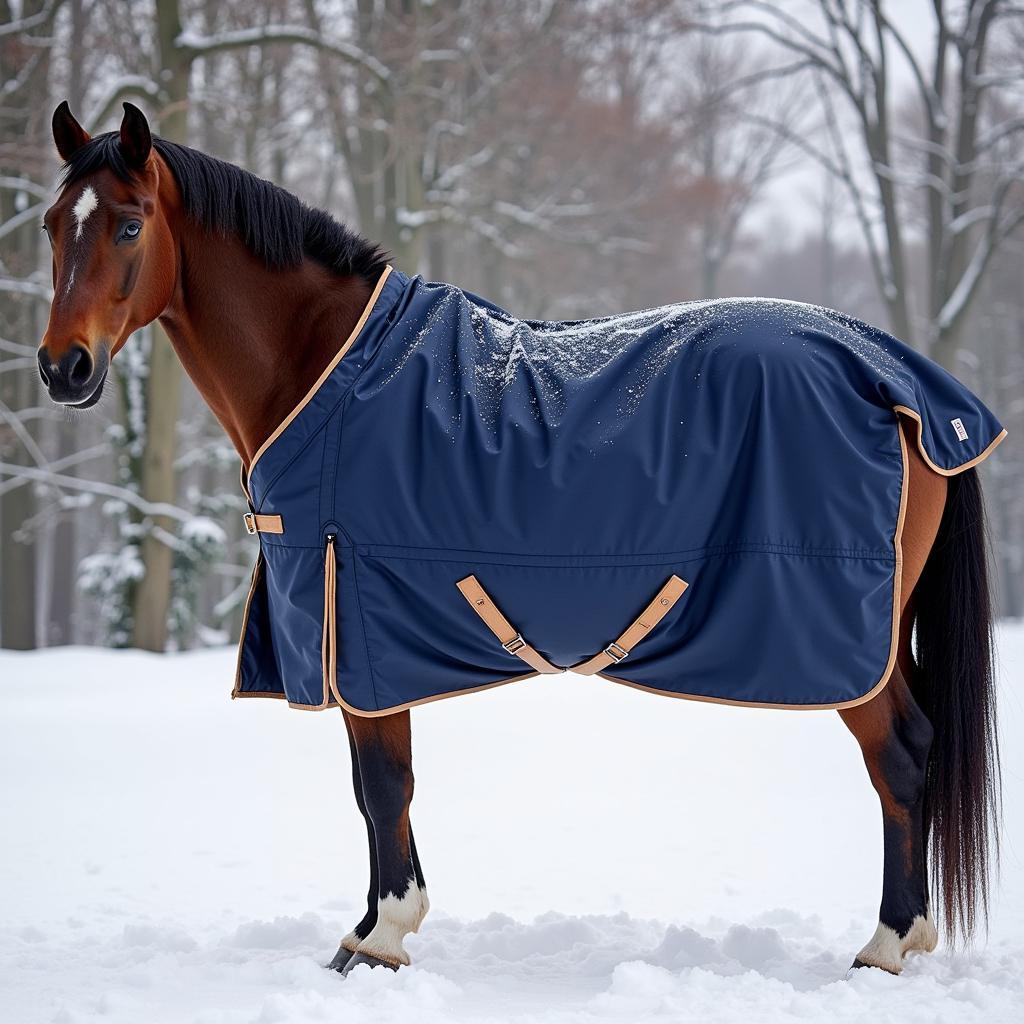Understanding the Horse Blanket Fill Chart is crucial for ensuring your equine companion stays comfortable and healthy throughout the colder months. This guide will delve into the intricacies of blanket fills, helping you choose the perfect blanket for your horse’s individual needs.
Understanding Horse Blanket Fill
 Different Types of Horse Blanket Fill
Different Types of Horse Blanket Fill
A horse blanket’s fill refers to the insulating material inside the blanket’s outer shell. This fill provides warmth and protection from the elements. The amount of fill is measured in grams, and understanding these numbers is key to selecting the right blanket. A higher gram fill indicates a warmer blanket. For example, a best turnout blankets for horses with a 400g fill will be considerably warmer than one with a 100g fill.
Navigating the Horse Blanket Fill Chart
The horse blanket fill chart provides a general guideline for choosing the appropriate fill weight based on temperature and your horse’s individual needs. While these charts are helpful, remember that factors like wind, humidity, and your horse’s age and health can influence the best choice.
Light Fill (50-150 grams):
Blankets with this fill are ideal for cool autumn days or layering under heavier blankets in winter. They provide minimal warmth and are suitable for horses with a thick coat or those living in mild climates. A light fill blanket might be a good choice for layering under a schneiders horse blanket if needed.
Medium Fill (150-250 grams):
This fill weight is versatile and suitable for moderate temperatures. It offers more warmth than a light fill blanket and can be used for horses clipped short or those who are sensitive to the cold.
Heavy Fill (300-400+ grams):
Heavy fill blankets are designed for the coldest winter weather. They offer maximum warmth and are essential for clipped horses or those living in harsh climates. Consider a horse winter blankets waterproof for added protection in wet and snowy conditions.
 Example of a Horse Blanket Fill Chart
Example of a Horse Blanket Fill Chart
Considering Your Horse’s Individual Needs
Beyond the fill chart, consider these factors:
- Age and Health: Older horses and those with health conditions may require warmer blankets than younger, healthy horses.
- Coat Type: Horses with thick winter coats may not need as heavy a blanket as those who are clipped.
- Living Conditions: Horses living in barns will require less insulation than those living outdoors.
“Choosing the right blanket fill can significantly impact your horse’s comfort and well-being,” says equine veterinarian Dr. Emily Carter. “Observing your horse’s behavior and body temperature is key to ensuring they are neither too hot nor too cold.”
What fill should I use for a horse blanket?
The ideal fill depends on temperature and your horse’s individual needs. Consult a horse blanket fill chart for guidance, but always consider factors like wind, humidity, and your horse’s health.
How do I choose the right horse blanket weight?
Consider the temperature, your horse’s coat, and their living environment. A heavier fill is suitable for colder temperatures and clipped horses, while a lighter fill is better for mild weather and horses with thick coats.
 Horse Wearing a Winter Blanket
Horse Wearing a Winter Blanket
“Remember,” adds experienced horse owner and trainer, John Miller, “a well-fitting blanket is just as important as the correct fill. A poorly fitting blanket can cause rubs and discomfort, negating the benefits of the insulation.” You may also consider a neck blanket for horses for added warmth. Don’t forget about shoulder protectors for horses to prevent rubs and ensure your horse stays comfortable.
Understanding the horse blanket fill chart is the first step to ensuring your horse stays warm and cozy during the winter months. By combining this knowledge with careful observation of your horse’s individual needs, you can provide them with the best possible protection against the elements.
FAQ
- What is horse blanket fill?
- How do I read a horse blanket fill chart?
- What factors influence blanket choice besides fill?
- What is the difference between light, medium, and heavy fill?
- How does my horse’s coat affect blanket choice?
- How can I tell if my horse’s blanket fits correctly?
- Should I use a blanket liner?
Need more information on horse blankets? Check out our articles on best turnout blankets for horses.
For personalized advice and assistance, contact Justus Horses USA at 0772127271, email us at [email protected], or visit our location at QGM2+WX2, Vị Trung, Vị Thuỷ, Hậu Giang, Việt Nam. Our dedicated customer support team is available 24/7.